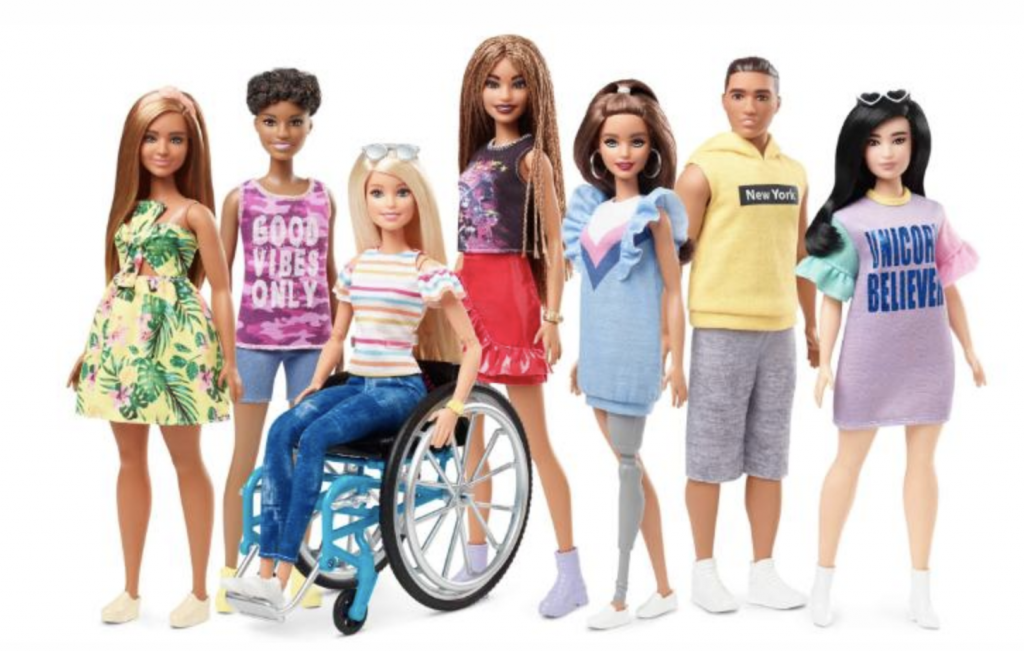The cultural icon Barbie doesn't often come top of mind when thinking about promoting inclusion and diversity . But the toy brand has been making efforts to expand beyond its traditional white, blonde, statuesque dolls.
"In June, Barbie will debut a doll with a prosthetic leg and another that comes with a wheelchair," write Michelle Lou and Brandon Griggs in an article for CNN . "The new dolls are part of Mattel's 2019 Barbie Fashionistas line, which aims to offer kids more diverse representations of beauty." Lou and Griggs add that Barbie has been making recent efforts to make its products more diverse by offering dolls with different skin shades, eye colors, hairstyles and clothing. "Mattel in 2017 introduced the first Barbie to wear a hijab , and the toymaker is considering creating a same-sex Barbie wedding set, " they write.
The diversification efforts by Barbie offer both corporate and a societal benefits.
Corporate Benefit
One of the primary motivations for Barbie branching out into diverse dolls in the first place has been to appeal to a broader range of consumers who don't identify with white, blonde Barbie. Growing spending power among Hispanics and African Americans, for example, creates a business opportunity and necessity.
The same is true for offering dolls with disabilities. Lou and Griggs write that there are over one billion people worldwide with a disability and that a wheelchair has been one of the most-requested accessories from fans for the toy line.
Societal Benefit
One of the biggest hurdles for inclusion and diversity efforts is unconscious bias among those within an organization. Even for the most well-meaning among us, deep-seated biases may be lingering below the surface, completely unknown to us. By exposing children to diversity and inclusion at an early age, we may help prevent, or minimize, these biases over time. One of the stated goals of Barbie executives in launching the new dolls is to help remove stigmas surrounding people with disabilities.
The recent diversification efforts of the Barbie toy line are a great example of how profit-driven business decisions can have a beneficial impact on diversity and inclusion efforts in a broader, societal, way. The two goals are frequently complementary for both business and society.
Related: Inclusion Works. But, We Must Keep Working!Yes, inclusion is a business imperative. But it makes sense for society too.
OUR NEW BOOK HAS BEEN RELEASED!
In Inclusion: STILL the Competitive Business Advantage , we continue our contributions to thought leadership on the importance of inclusion in an environment that has been roiled with new discussion—and new dissent—amid rapidly changing demographics, continually emerging technology and a global economy that is continually shifting to favor newly emerging market powerhouses. We're very gratified by the positive reviews already pouring in.



